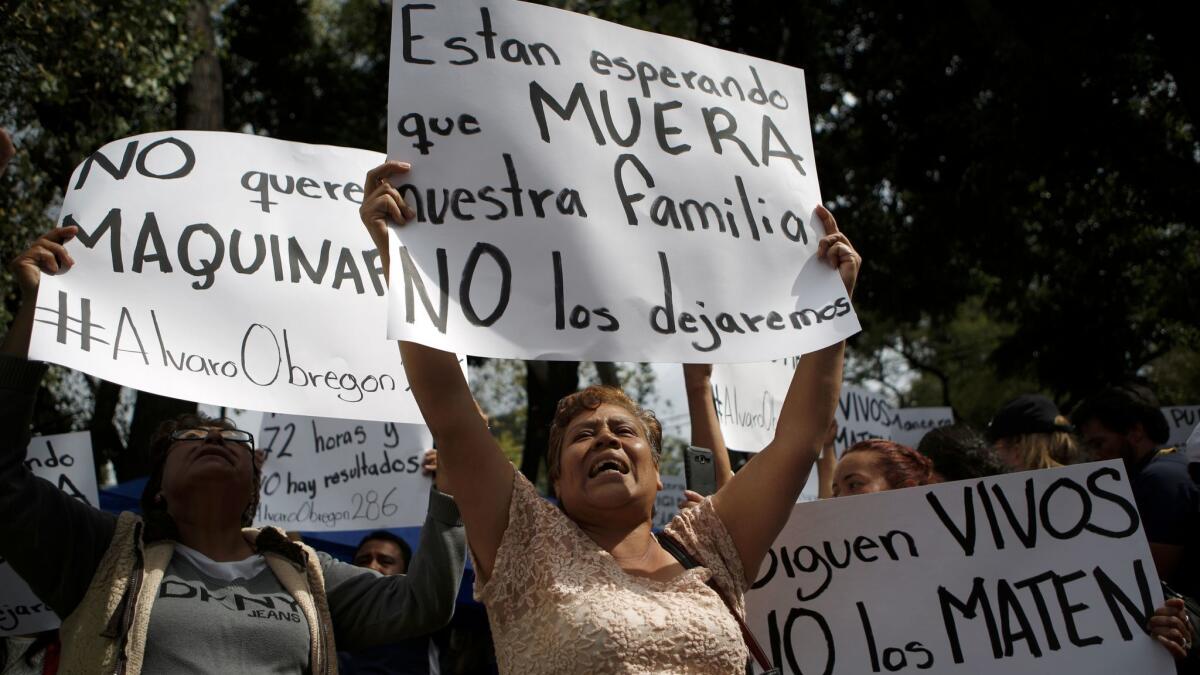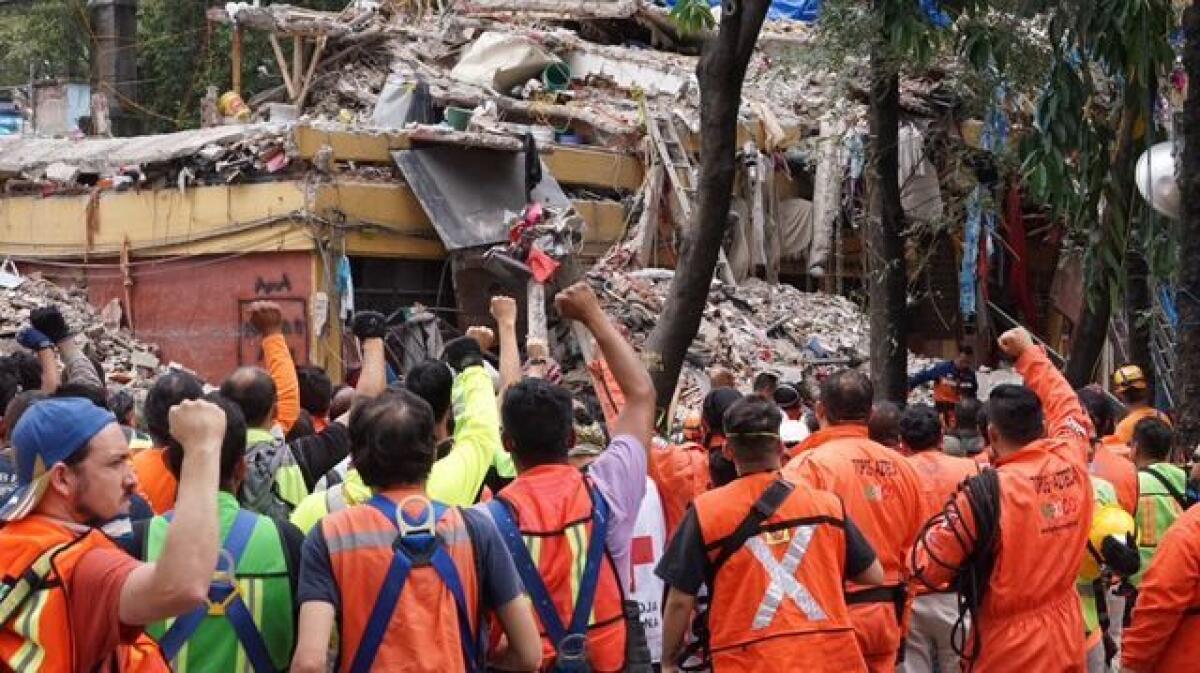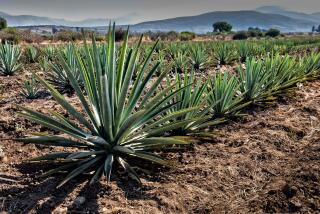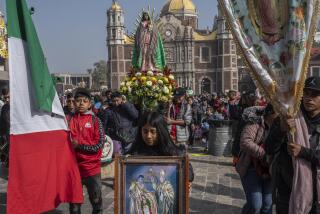On the Ground: In Mexico City, a sense of urgency and disquiet

Arriving in Mexico City after an absence of a few days is to arrive to a town transformed.
It remains a vibrant, dynamic metropolis, but there is an overwhelming sense of urgency, and disquiet. The city is disjointed several days after Tuesday’s earthquake left scores dead and thousands homeless.
Pedestrians wander residential streets once choked with traffic. Yellow tape marks off blocks where buildings have toppled or may be on the verge of tumbling.
“Gas!” shouts a police officer on a roped-off street in the hard-hit Condesa district, a hip quarter that has been abruptly transformed to disaster central. “We have a gas leak! Turn off your phones! No cigarettes!”
Stately, tree-lined Amsterdam Avenue has the calm-after-the-storm feel that resembles the aftermath of an artillery barrage. Rubble-strewn buildings with gaping cracks are roped off. People gawk from behind police cordons.
The odor of natural gas wafts over the hectic scene.
Makeshift volunteer stands offer free water and electric charges for cell phones.
From time to time, a whistle and hands-up sign represents a signal for everyone to be quiet. Rescuers are listening for signs of life inside collapsed structures.
Evacuated residents mingle with volunteers, police and others who have come for a look. Many of the district’s trendy restaurants have shut down, at least for now. But others offer free food.
“Would you like a torta?” asks an elderly woman with a basket of ham sandwiches smeared inside with smashed beans.
The spirit of solidarity is ubiquitous, and infectious.
“Volunteers! We are looking for volunteers to go to Morelos!” shouts Adrian Hernandez, in sublime Plaza Popocateptl, a tree-shaded island with a fountain that is usually a tranquil refuge in the mega-city.
The plaza is now a throbbing hub of activity. Picks, shovels, baskets of food, bottles of water and other items occupy the fountain. Men and women in hard hats, multi-colored vests and masks — protection from the dust — dart about with purpose. From tents, volunteers distribute free food and clothing. Many who are homeless, or afraid their homes may yet collapse, sleep in tents.
Hernandez was soliciting volunteers to go south to the state of Morelos, where several areas were hard hit during the earthquake, especially the devastated town of Jojutla.
“We are looking for engineers, electricians, anyone who can help in Morelos,” Hernandez says into a megaphone. “You need to have boots and helmets!”
The sign on an aid truck soliciting food and other material reads: “Going to Jojutla!”
In a few minutes, two dozen volunteers are lined up. They will leave in the evening.
Wandering the streets of Condesa and the neighboring Roma neighborhood, both of which suffered extensive damage, one encounters a distinctly upbeat, almost small-town air, despite the scope of the destruction in a densely populated urban swath of the city. One rescue worker robotically waves a Mexican flag from atop a bronze statue.
“This is Mexico,” says Deyanira Aparicio, 39, who was among those who made the trek to hand out food and drink. “This is our spirit.”
Along Alvaro Obregon Avenue, a major artery, traffic was stopped. A dramatic scene has been unfolding at #286 Alvaro Obregon since Tuesday, when the earthquake collapsed an 8-story office building.
On the street, relatives of up to 20 people possibly trapped or dead under the rubble mingle with soldiers, police and the crews of TV satellite trucks, along with the curious.
A military truck is marked with a sign: “Psychological services.”
All eyes are focused on the crushed remains of the office building. It is a pancaked jumble of broken concrete slabs, smashed air conditioners, pulverized office furniture, curtains and other assorted debris.
Rescue workers in yellow-striped red overalls labor atop this concentrated mass of urban detritus. Someone says a specialist crew from the Israeli army has arrived — they are well-accustomed to the debris of shattered buildings. Several rescue dogs sniff about on the street, seemingly anxious to get to work in the pile.

The rescue crew uses another half-destroyed building, just adjacent, as a platform to gain access to the rubble heap, then descending onto the pile via a ladder. The workers — specialists known in Mexico as Topos, or moles — have drilled a tunnel to gain access to the interior. They poke inside with a long metal pole as onlookers peer at them anxiously.
“We won’t give up,” vows Olinca Gonzalez, 29, among those gathered outside.
She holds a hand-written cardboard placard with a likeness of her stepmother, Leonor Santiago Gonzalez, who worked as an assistant to an accountant in the building but hasn’t been heard from since the quake.
“We are sure she is alive,” Gonzalez says. “We know she is alive.”
One of the survivors pulled from the rubble said Leonor was indeed alive, Gonzalez says. Already, more than 25 people already have been rescued from the building.
From outside, it seems unfathomable that anyone could survive in the compacted mound of wreckage.

A hard rain — an aguacero, as they say here — temporarily suspends rescue operations. Lightning illuminates the sky. Thunder booms from the heavens. Onlookers crowd beneath plastic tarps. The families waiting outside seem to take a deep collective breath. The worry, they say, is that authorities may give up, despite official assurances that rescue work will continue. Any stoppages raise concern.
“That’s our great fear, that they will give up and bring in heavy equipment to demolish the building,” says Gabriela Gonzalez, 30, sister of Olinca. “That is an outcome we will not accept. They must keep looking until everyone is accounted for.”
As dusk approaches, the neighborhood takes on an eerie quality. Stadium-style lights illuminate the sites of toppled buildings, where rescue work is continuing. People make their way carefully along once-busy thoroughfares with the aid of flashlights.
Outside #286 Alvaro Obregon, a sharp whistle pierces the air. Bystanders and others raise their hands in the now-familiar signal. It is the sign of all quiet. The buzz of conversation is reduced to a murmur. Everyone strains to hear as darkness falls.
Patrick J. McDonnell is the Times’ Mexico City bureau chief. He was in Oaxaca, reporting on the Sept. 7 earthquake that hit southern Mexico, when Tuesday’s earthquake struck, causing damage in Mexico City and elsewhere.
twitter: @mcdneville
More to Read
Start your day right
Sign up for Essential California for news, features and recommendations from the L.A. Times and beyond in your inbox six days a week.
You may occasionally receive promotional content from the Los Angeles Times.






